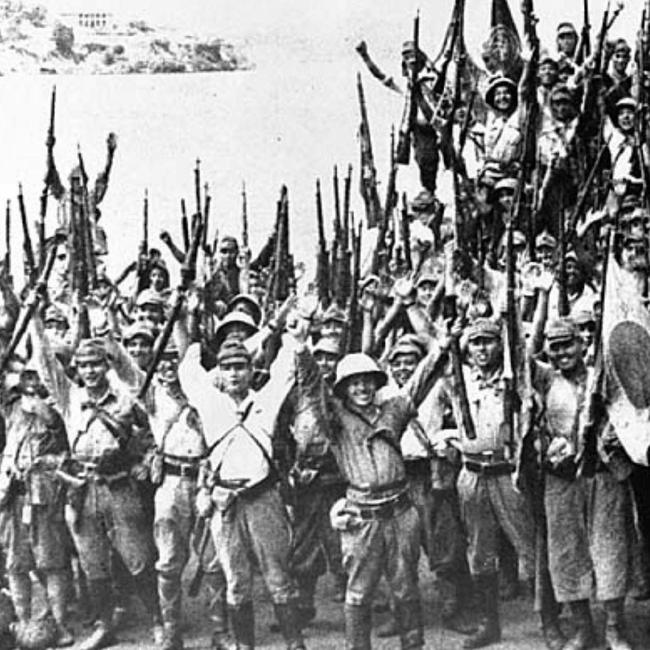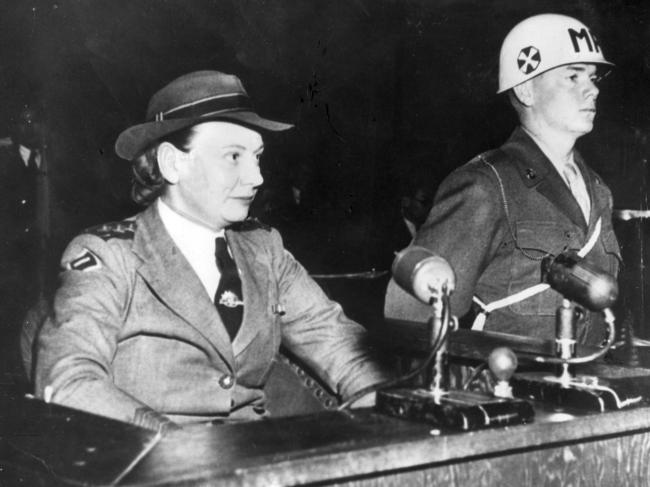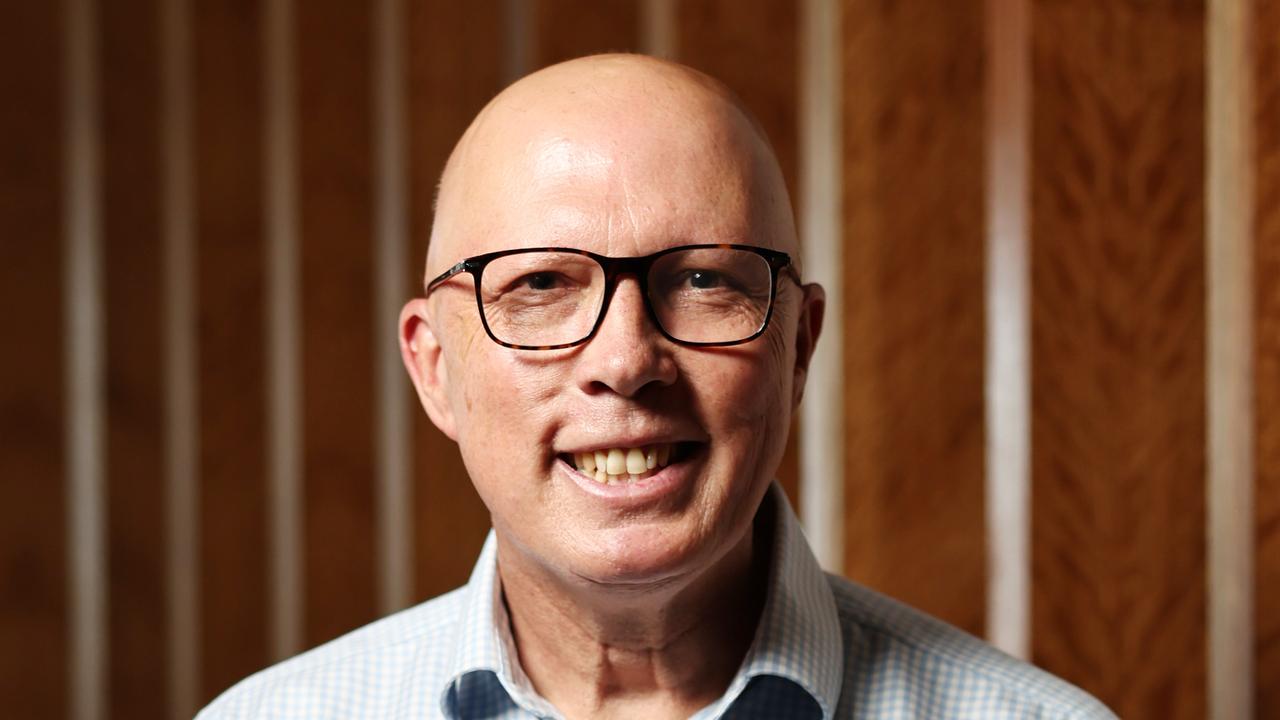‘Heartbreaking’ story of horror and inspiration: Grantlee Kieza on Vivian Bullwinkel and the nurses of Bangka Island
Piecing together the stories of wartime Australian nurses imprisoned and brutalised by the enemy was confronting, yet unexpectedly inspiring, says leading history writer.

National
Don't miss out on the headlines from National. Followed categories will be added to My News.
“That’s my mother’s generation – those poor girls.”
Grantlee Kieza OAM is no stranger to history’s darker chapters. As one of Australia’s leading writers in his field he has immersed himself in stories from the early colonial era to World War I and beyond.
His latest work, Sister Viv, was the most confronting yet – in parts, “heartbreaking for me to write” – while also a story of extraordinary inspiration.
It is a stunning retelling of the life of Vivian Bullwinkel, who is “one of the greats of Australian history” according to Kieza.

Vivian is known to most as the World War II nurse who somehow survived when around 100 shipwrecked Allied evacuees were hideously executed by the Japanese to whom they had just surrendered, in what became infamous as the Bangka Island Massacre.
The 26-year-old was one of 22 Australian Army nurses who, along with a civilian woman, were marched into the sea off Radji Beach then machinegunned and bayoneted. Vivian was shot through the midriff, playing dead as she drifted out to sea.
INTERACTIVE EXTRACT ‘Chin up girls’: Horror on Bangka Island
Setting Vivian’s story against the big events of the time, Kieza writes in detail of the horrors of that campaign: the terrifying slaughter as supposedly impregnable Singapore fell; the bombing of ships trying to flee; the uncertain fate of those taken prisoner; and the brutality of the enemy, establishing right at the start that the Radji killers had just weeks earlier, “raped and murdered their way through” a Hong Kong hospital on Christmas Day.

In recent years, allegations have arisen that the women on Radji were also sexually assaulted and that sole survivor Vivian was urged to cover it up by Australian Army top brass during the post-conflict war crimes tribunal, in part to spare their families extra distress.
Kieza tackles that sensitive issue comprehensively in the book but did not want it to overshadow Vivian’s story; and the former journalist treats unprovable speculation with some scepticism.
“It was difficult because there’s been a lot of, I guess, we would call it revisionist history lately saying that the women were definitely raped before they were shot,” he says, adding: “There’s no actual proof of that happening – there’s been a lot of speculation.”
Of those prosecuting the claim, he says: “Without being unkind to them, I think they’re trying to milk another angle.”

Among the accounts Kieza questions is that of a woman he interviewed, who claimed she had been told by an elderly Vivian that the nurses were violated. “I said, ‘Why would Vivian tell you this, when she’s only just met you, when she never said anything publicly about this happening?’ And (the woman) said ‘She (Vivian) wanted to get it off her chest’”. Pondering this, Kieza asks: “She had 50 years to get it off her chest. Why would she tell someone she just met?”
Kieza also interviewed Vivian’s nephew, “he was like her son”, who said there was no indication she ever raised it with her family.
Other arguments are still more circumstantial – such as the suggestion that Vivian had tinea, which could have been a sign of syphilis. “Or it could have been that she just had tinea,” Kieza points out.

That would not be surprising, given the awful health conditions in the prisoner of war camps where Vivian spent the three years after Bangka. It is a less well-known part of Vivian’s story, but fascinating and inspiring at once.
Kieza tells how after surviving the massacre and hiding for days in the jungle with a dying soldier, Vivian realised she had to risk surrender once more, or both would perish. This time, the enemy drove them to a town and gave them tea – an astonishing contrast to their countrymen on Radji Beach.
However, that was where any kindness ended and over the next three years Vivian, hiding the secret of what she had witnessed on Bangka, watched fellow captives die in droves from brutality, starvation, disease and despair.
Many of her prison companions were nurse friends who, after their ship was bombed, also made it to Bangka but were captured by less murderous Japanese – the lottery of war.
Kieza zooms in on their stories as well, giving Sister Viv a much broader cast of characters than the title may suggest. Weeks after finishing writing, he remains astounded by the selfless courage shown by these women in the very worst of conditions – and when they returned home, to lead quiet lives of service and dignity.
“It was a really splendid generation,” he says, drawing a comparison to the “road rage, aggression and swearing” one might encounter today on a simple trip to the shopping centre. “These were people that, whatever happened to them, retained that real modest, dignified charm. I just think that’s a remarkable lesson for people today.”

Vivian – born in SA, schooled and trained in NSW, based in Vic for her career then retired to WA – was the personification of that spirit. After testifying at the war-crimes tribunal in Japan she continued to serve, was decorated and promoted to the rank of lieutenant-colonel, became a member of the Council of the Australian War Memorial and president of the Australian College of Nursing and even flew into war-torn Vietnam to help evacuate orphans in 1975. Capping it all, she also found happiness on a romantic and personal level.
“She lived a very contented life. In many ways, she wanted to live a happy life in memory of those who didn’t come back,” Brisbane-based Kieza says.
“She’s been gone for 20 years, but the legacy of her life is kind of look out for other people and do the best you can to help others and you’ll have a better life because of it.”


Sister Viv by Grantlee Kieza will be published by HarperCollins on April 3.
An exclusive extract detailing Vivian’s account of that horrific day on Radji Beach will be published by this masthead on Sunday, March 31.
Originally published as ‘Heartbreaking’ story of horror and inspiration: Grantlee Kieza on Vivian Bullwinkel and the nurses of Bangka Island


